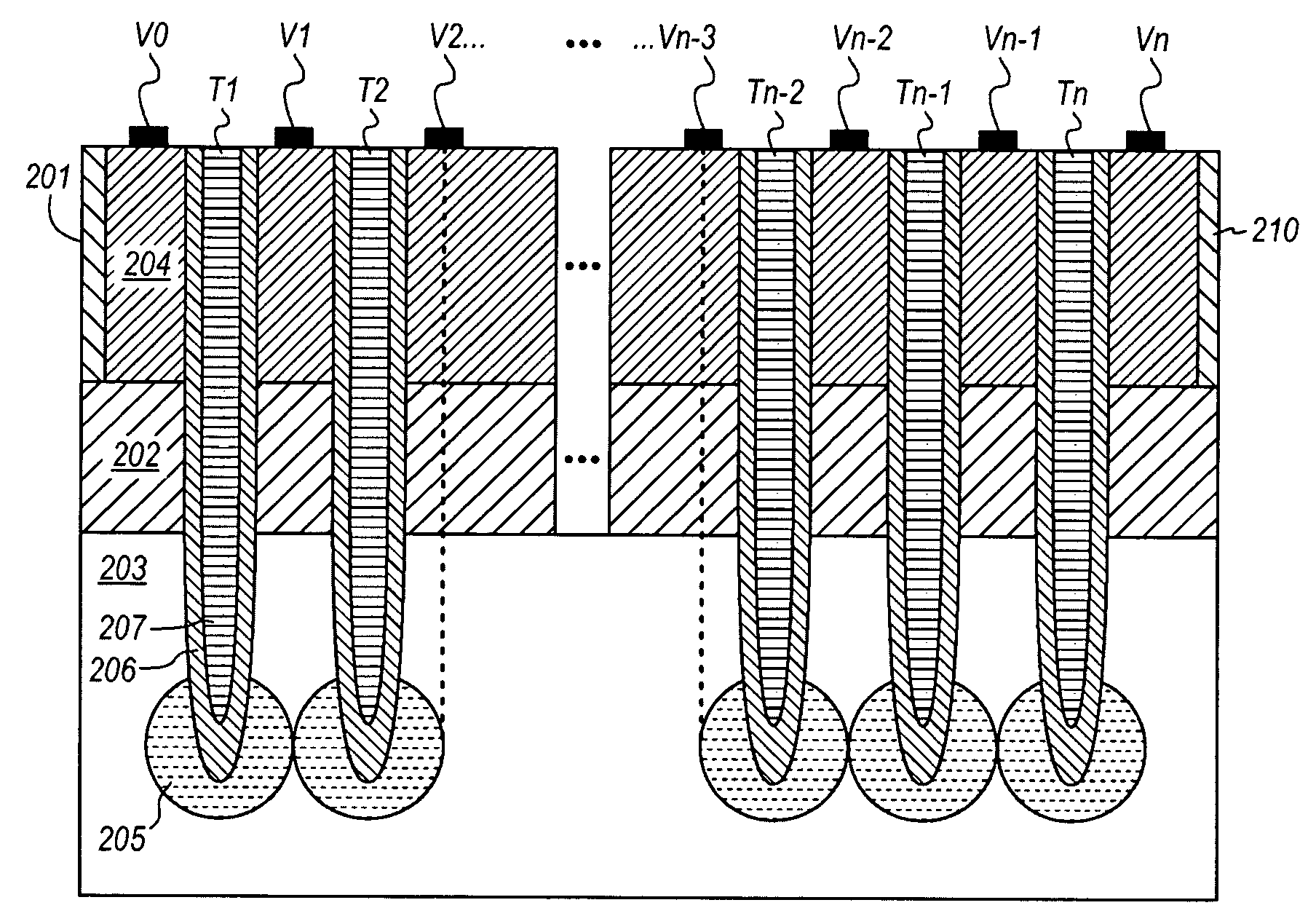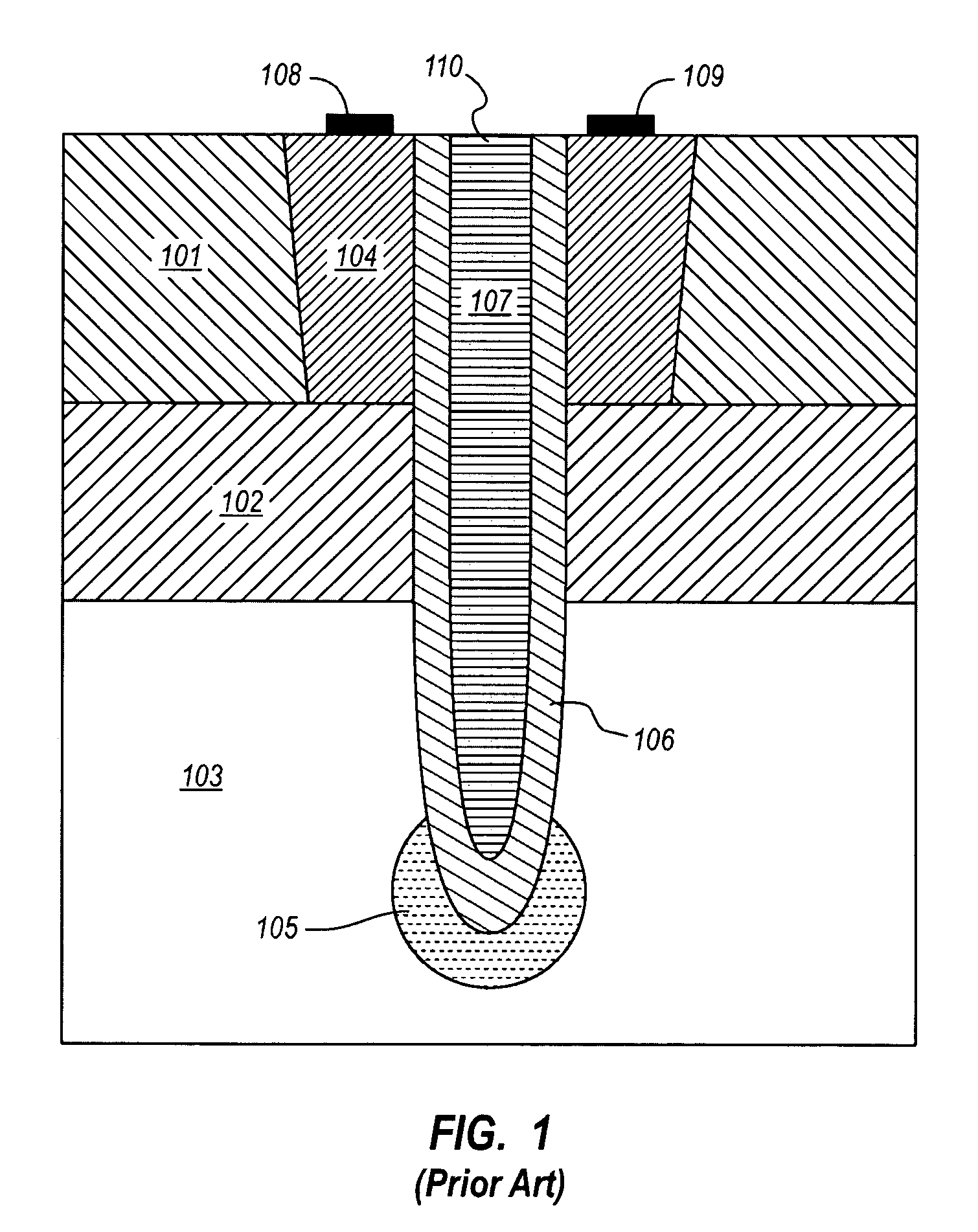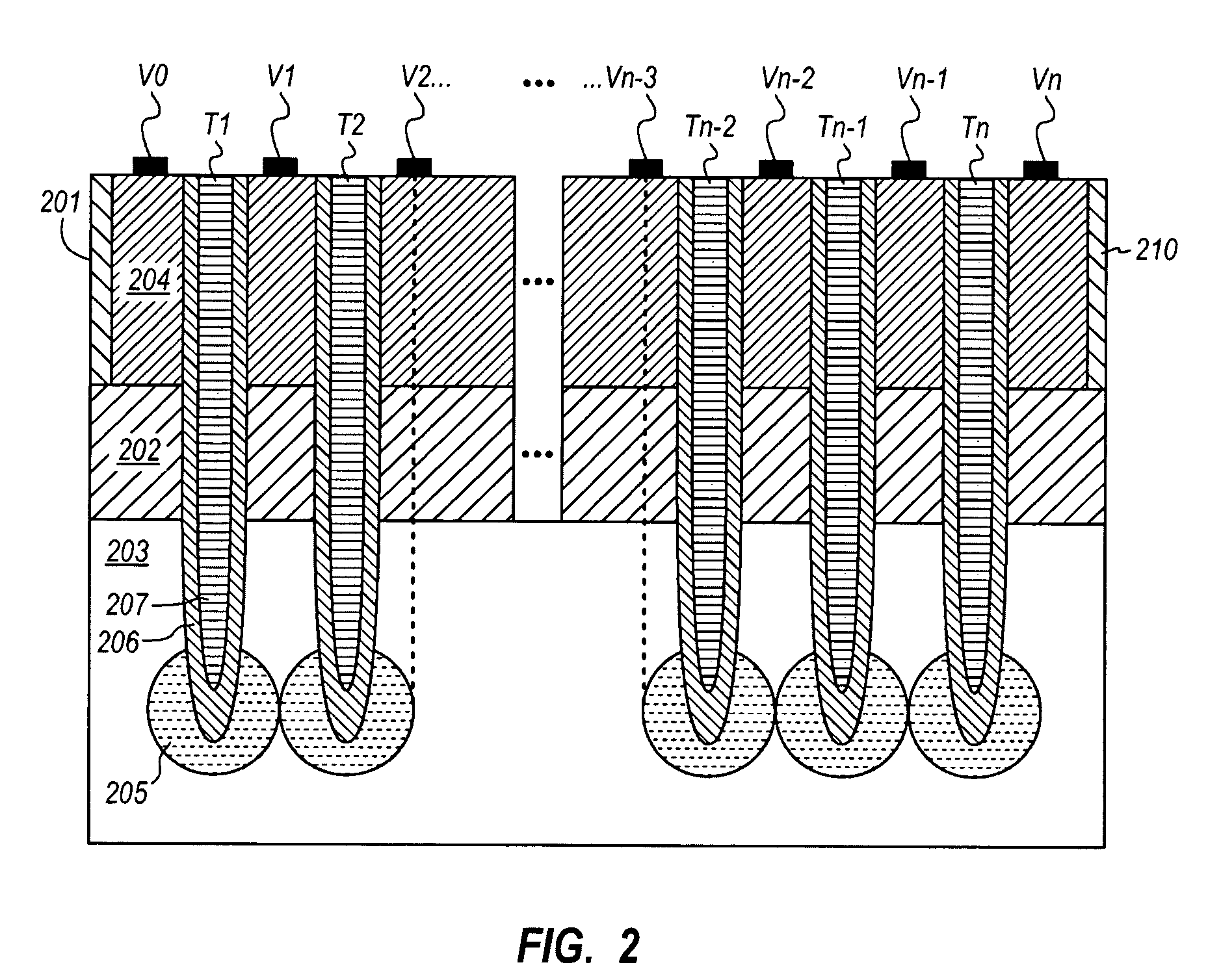Deep trench isolation for power semiconductors
a technology of power semiconductors and trenches, applied in the direction of semiconductors, semiconductor devices, electrical apparatus, etc., can solve the problems of reducing the reliability of isolation structures, reducing the efficiency of isolation structures, and imposing barriers on junction isolation smart power technologies, so as to achieve the effect of reducing or avoiding breakdown at weaknesses in isolation structures, improving reliability and stability, and substantially improving reverse blocking voltage of structures
- Summary
- Abstract
- Description
- Claims
- Application Information
AI Technical Summary
Benefits of technology
Problems solved by technology
Method used
Image
Examples
first embodiment
[0036]One semiconductor device (e.g. an active device such as a transistor) is located in the left-side epitaxial-pocket (201), and the adjacent semiconductor device (e.g. an active device such as a transistor) is located in the right-hand side epitaxial-pocket (210). In between them, a number (n) of trenches (Tn) are provided. Between each trench, a contacted semiconductor region, e.g. silicon region is present. The contact is biased to a given potential Vi (i=1, . . . n−1). Each trench is similar to the structure shown in FIG. 1. In this first embodiment, the polysilicon layer (207) is left floating. In general, the upper layer between two successive trenches is a highly doped region (204) having a typical doping level between 1018 and 1020 cm−3 and has the same conductivity type as that of a lower layer in the form of buried layer (202). While in this first preferred embodiment, the buried layer (202) is present and has a conductivity type opposite to the conductivity type of the...
second embodiment
[0037]In a second embodiment, the polysilicon layer (207) can be contacted and biased to an optimum potential. As many trenches as required can be put next to each other. In practice, four trenches are typically sufficient for maximum gain in reverse blocking voltage.
[0038]A simple analytical model for the single and double trench isolation structures, using a capacitive network will now be explained. The model is based on a capacitor divider network, which in general for a single trench (referring to FIG. 1):
[0039]Vpoly=CdrainCtot·Vdrain+CsourceCtot·Vsource+CsubsCtot·Vsubs(2)
in which:
Ctot=Csubs+Csource+Cdrain (3)
“Source” refers to contact (108), “drain” refers to contact (109), “gate” refers to region (110), “subs” refers to the substrate (103).
[0040]The capacitance of the source, drain and substrate regions depends on the depth of the trench, the thickness of the epitaxial layer of the second conductivity type, e.g. the n-type epitaxial layer, and the out-diffusion of the BLN, t...
PUM
 Login to View More
Login to View More Abstract
Description
Claims
Application Information
 Login to View More
Login to View More - R&D
- Intellectual Property
- Life Sciences
- Materials
- Tech Scout
- Unparalleled Data Quality
- Higher Quality Content
- 60% Fewer Hallucinations
Browse by: Latest US Patents, China's latest patents, Technical Efficacy Thesaurus, Application Domain, Technology Topic, Popular Technical Reports.
© 2025 PatSnap. All rights reserved.Legal|Privacy policy|Modern Slavery Act Transparency Statement|Sitemap|About US| Contact US: help@patsnap.com



